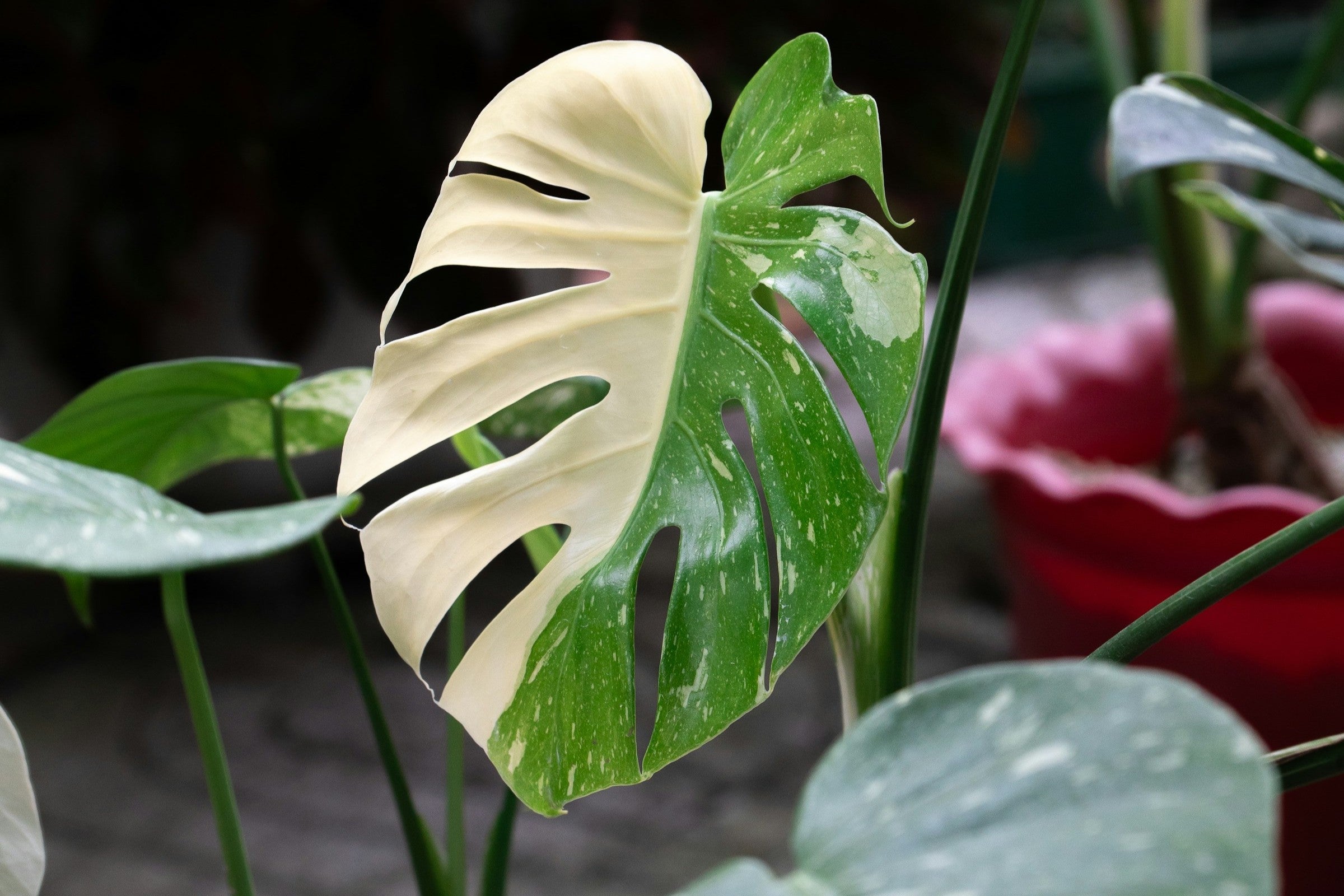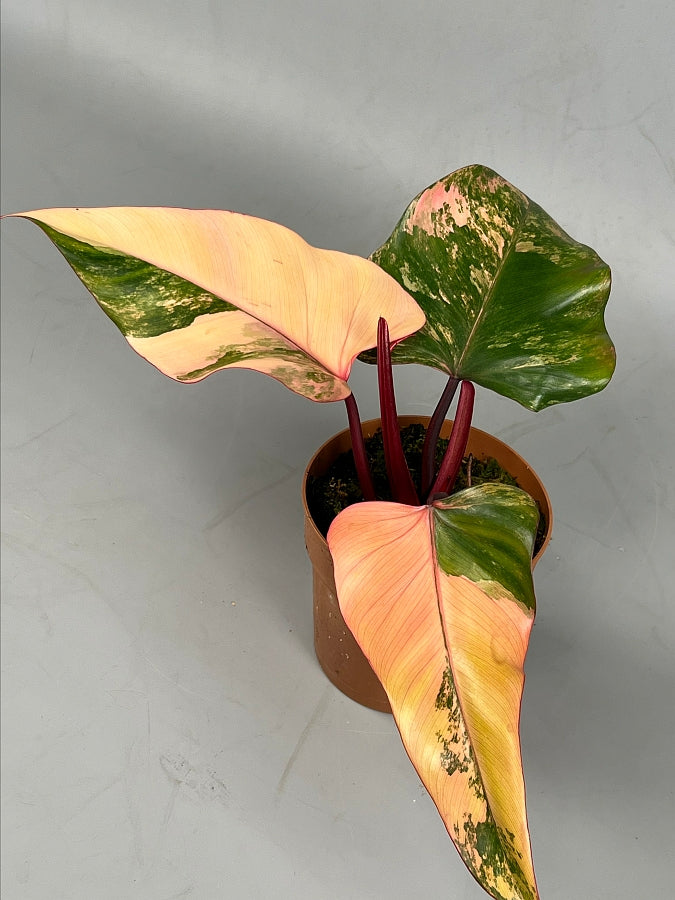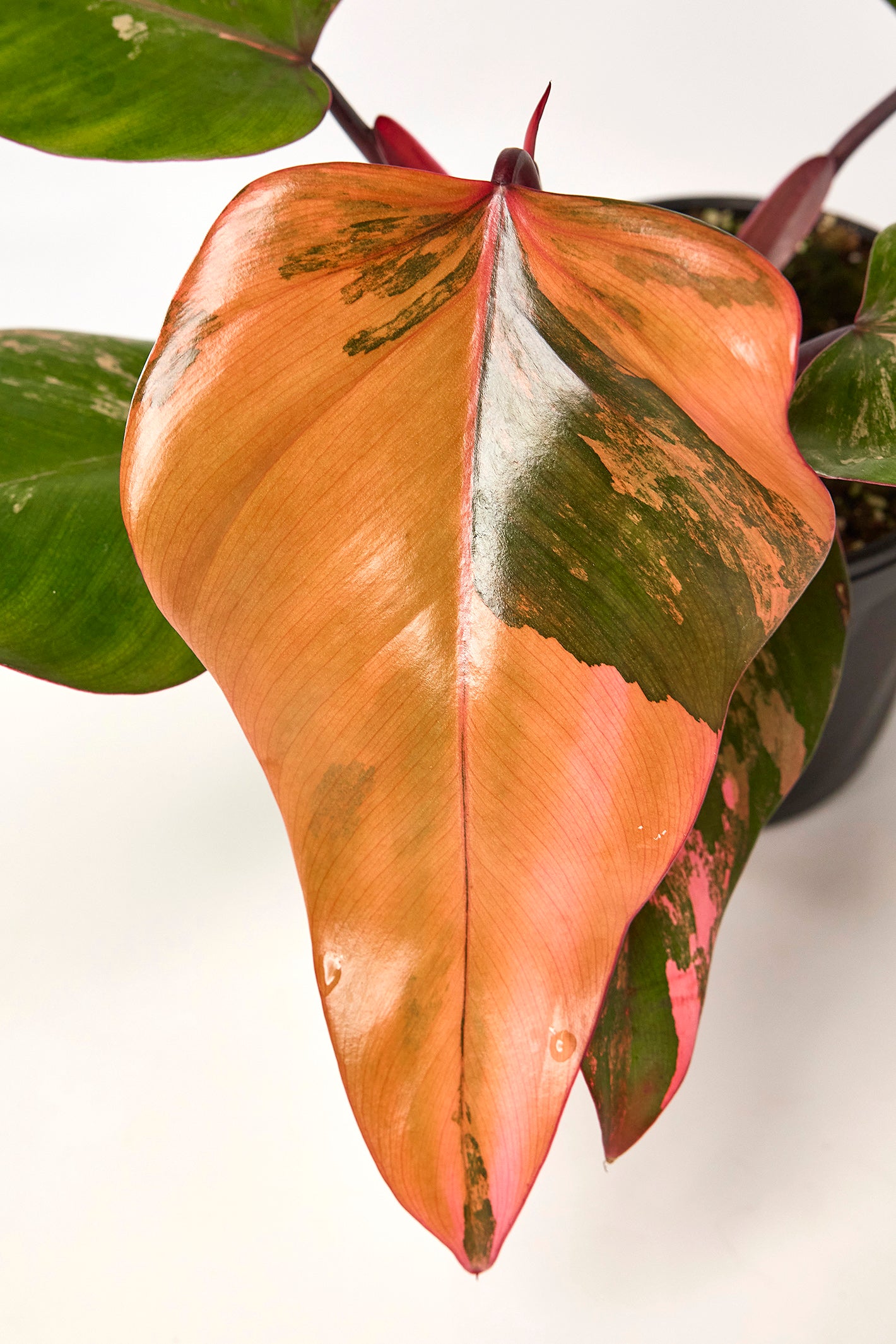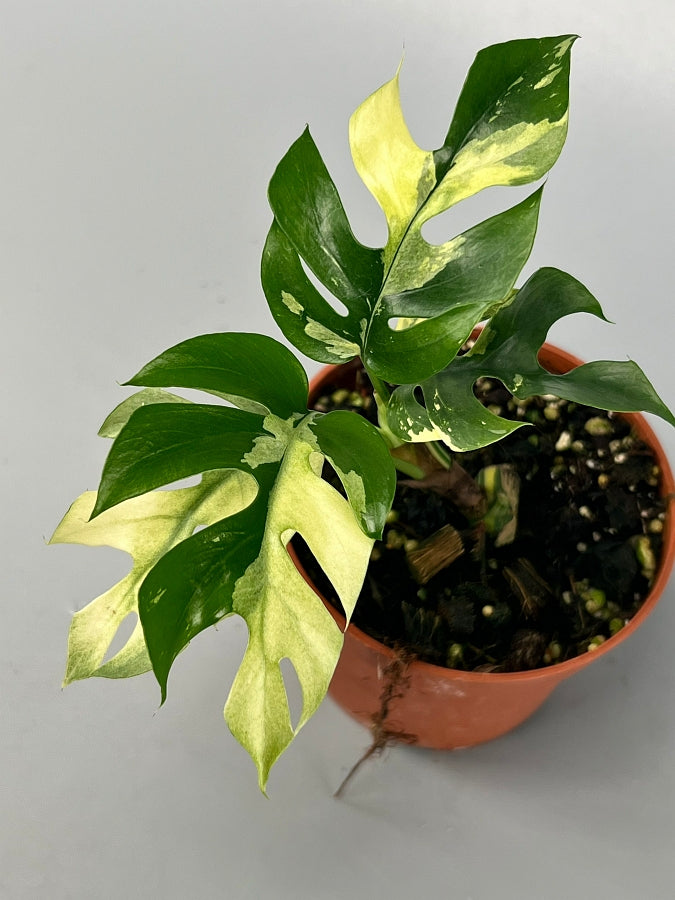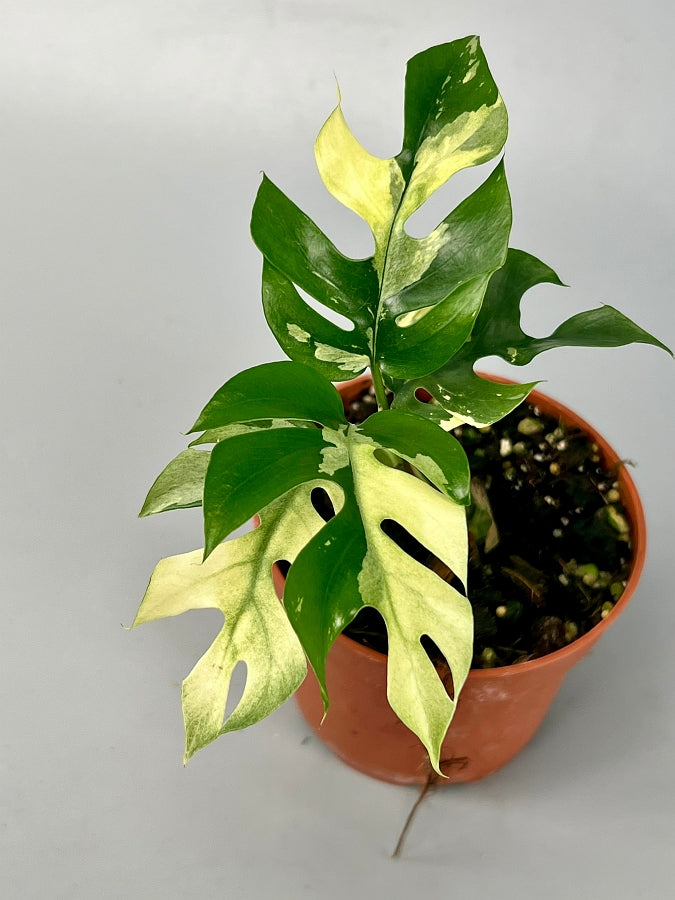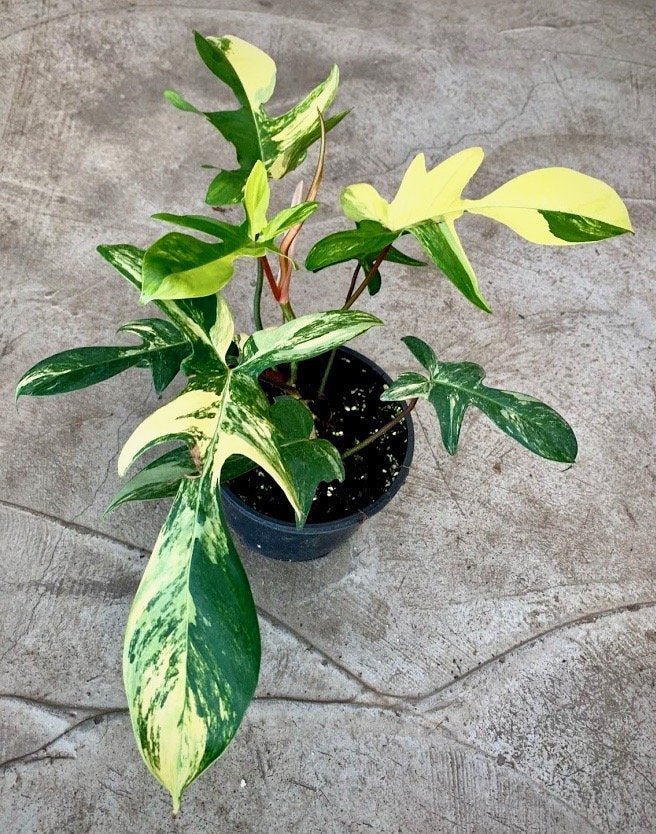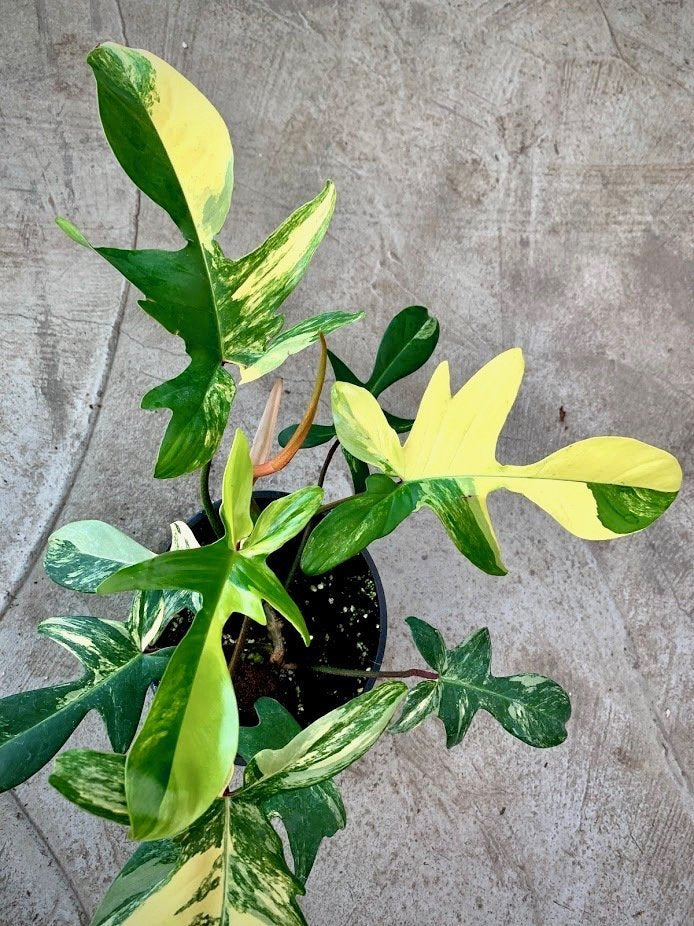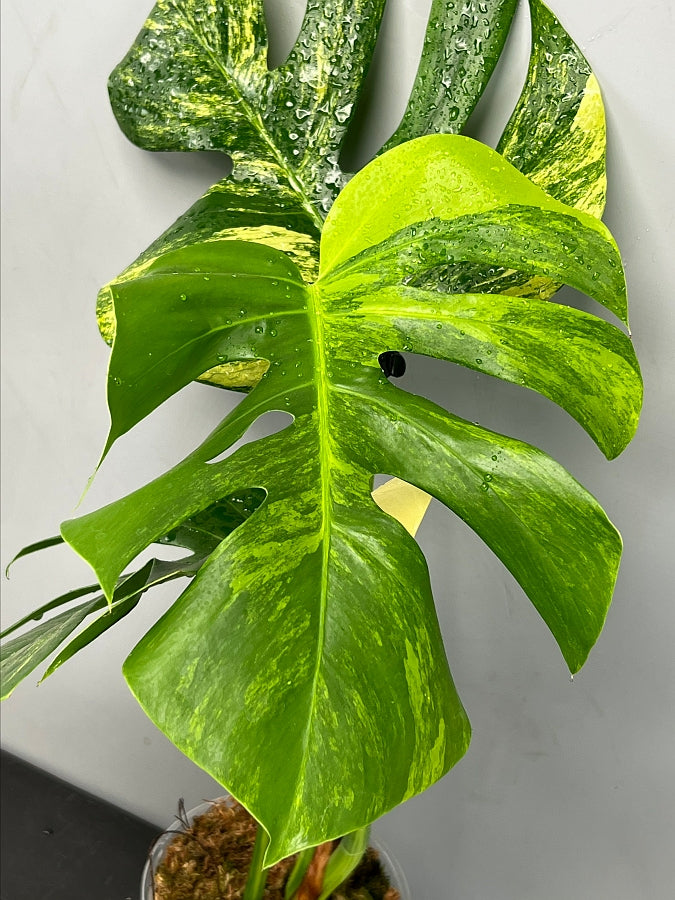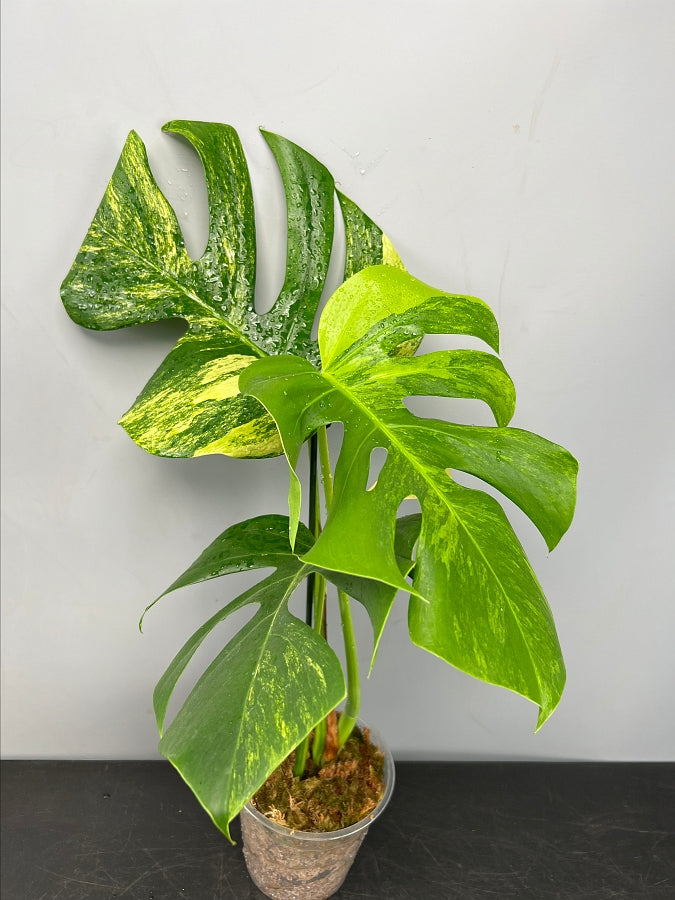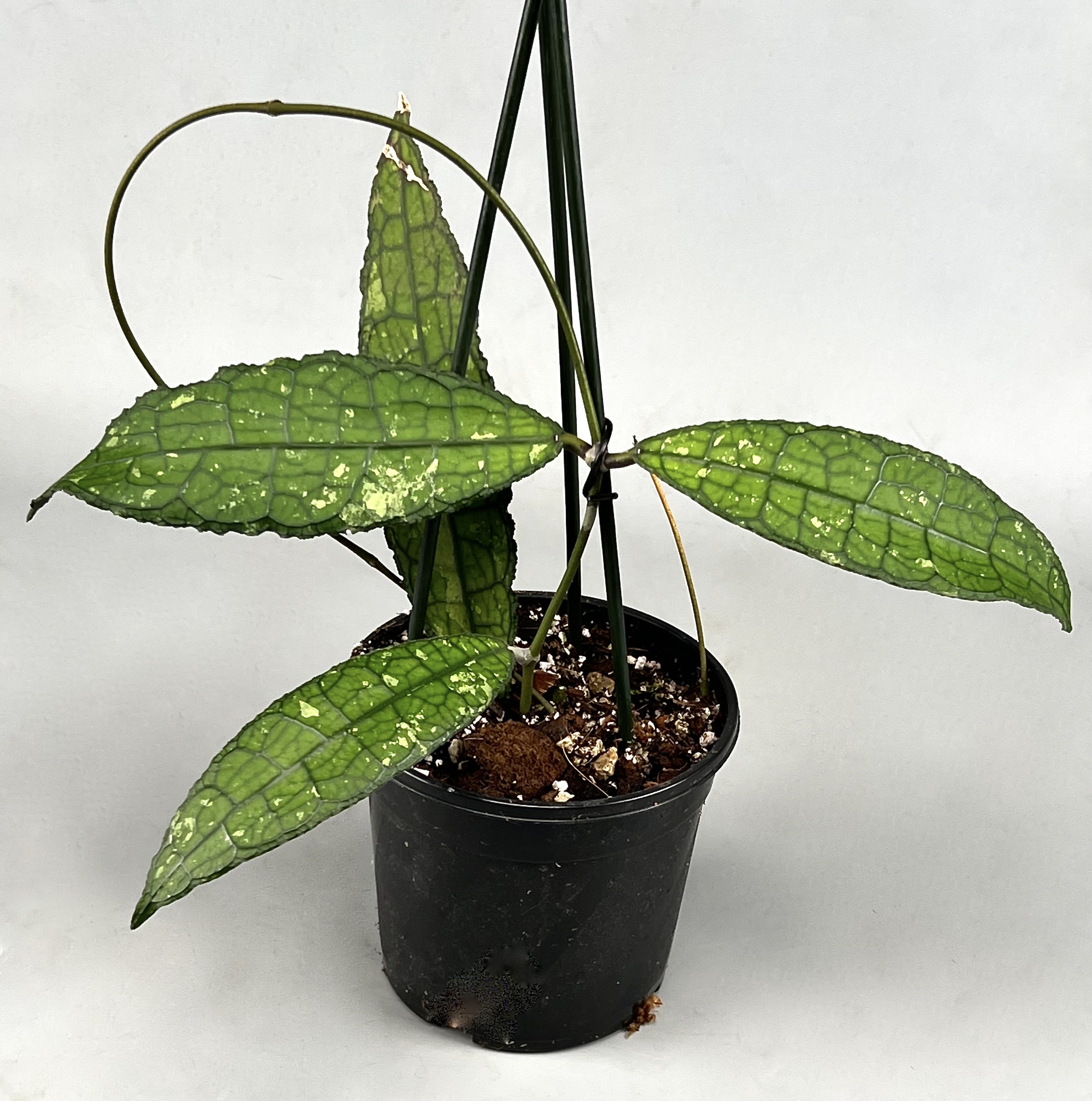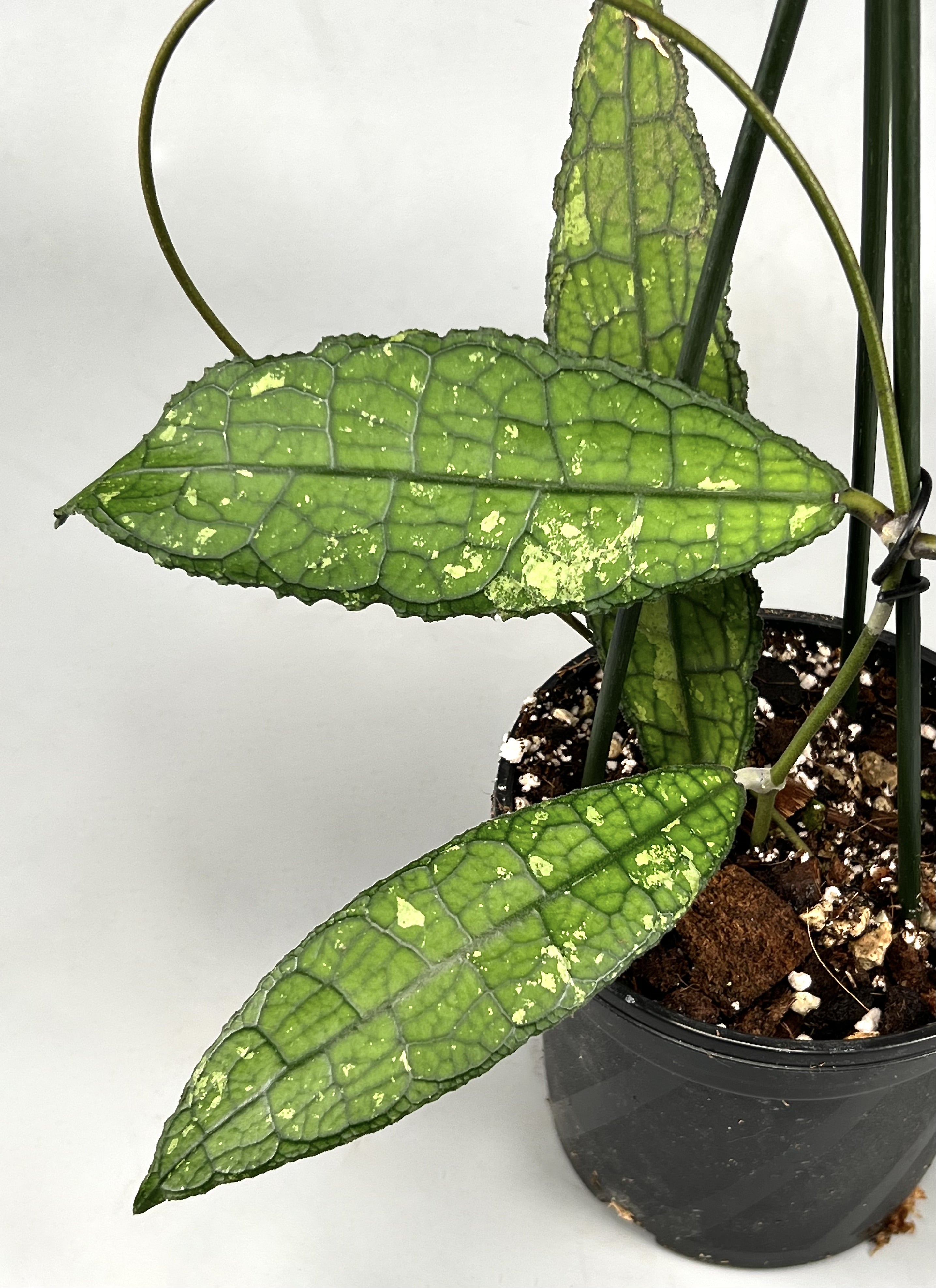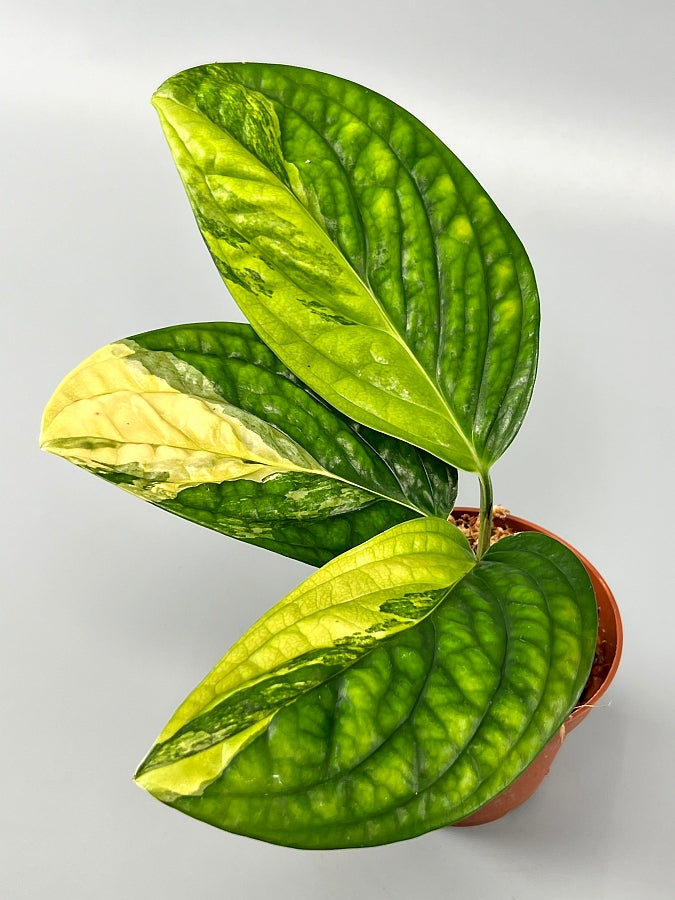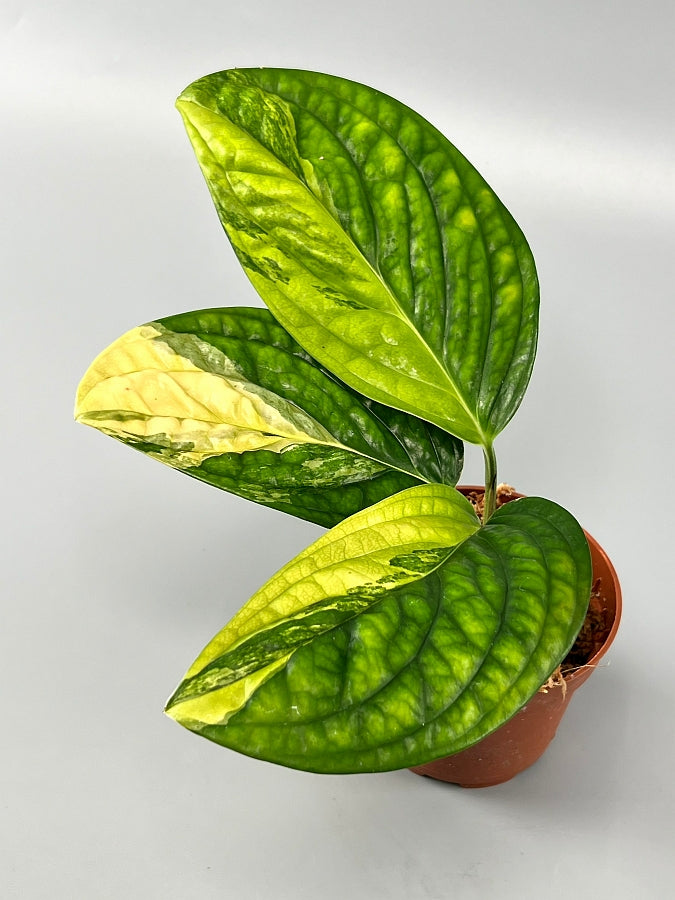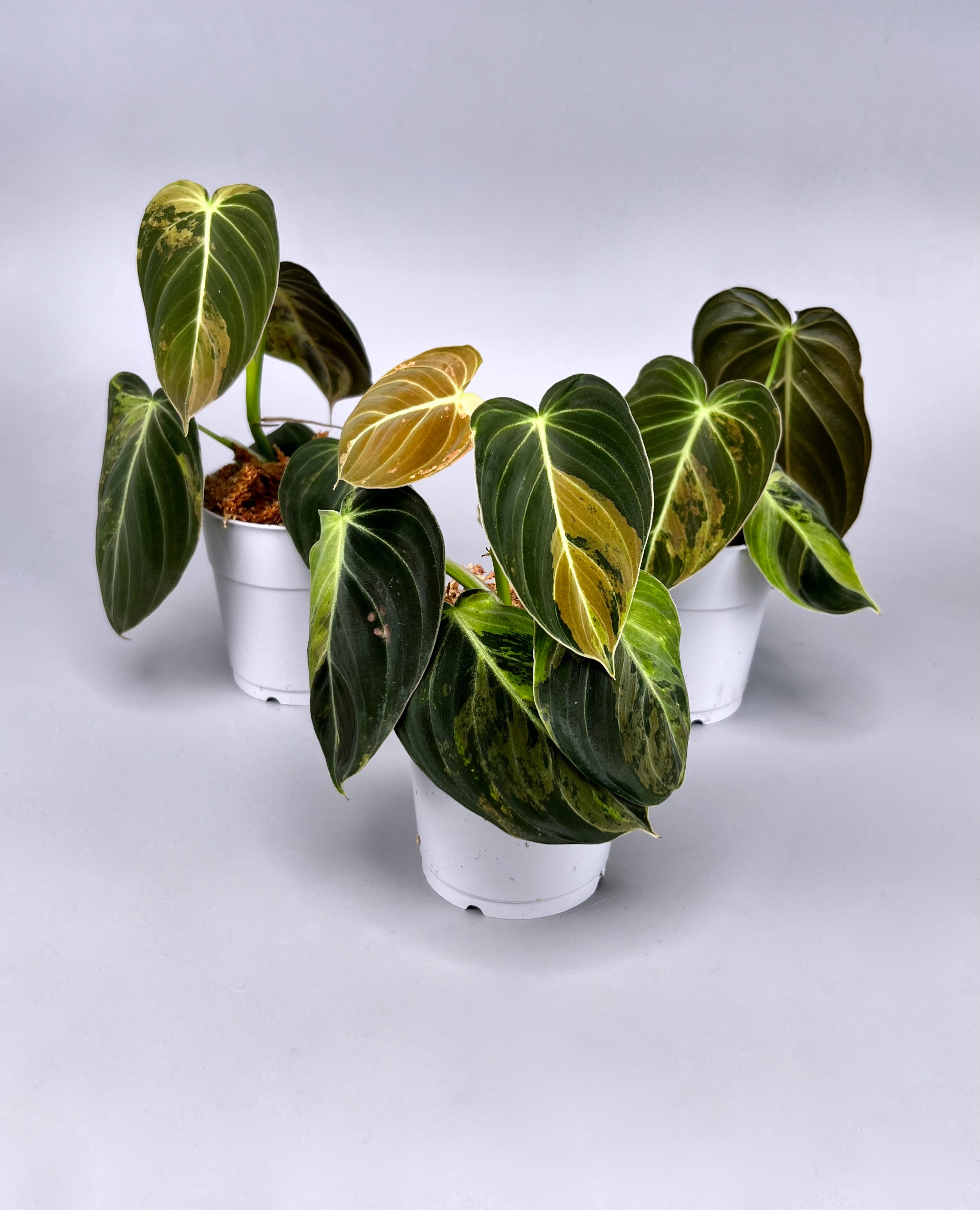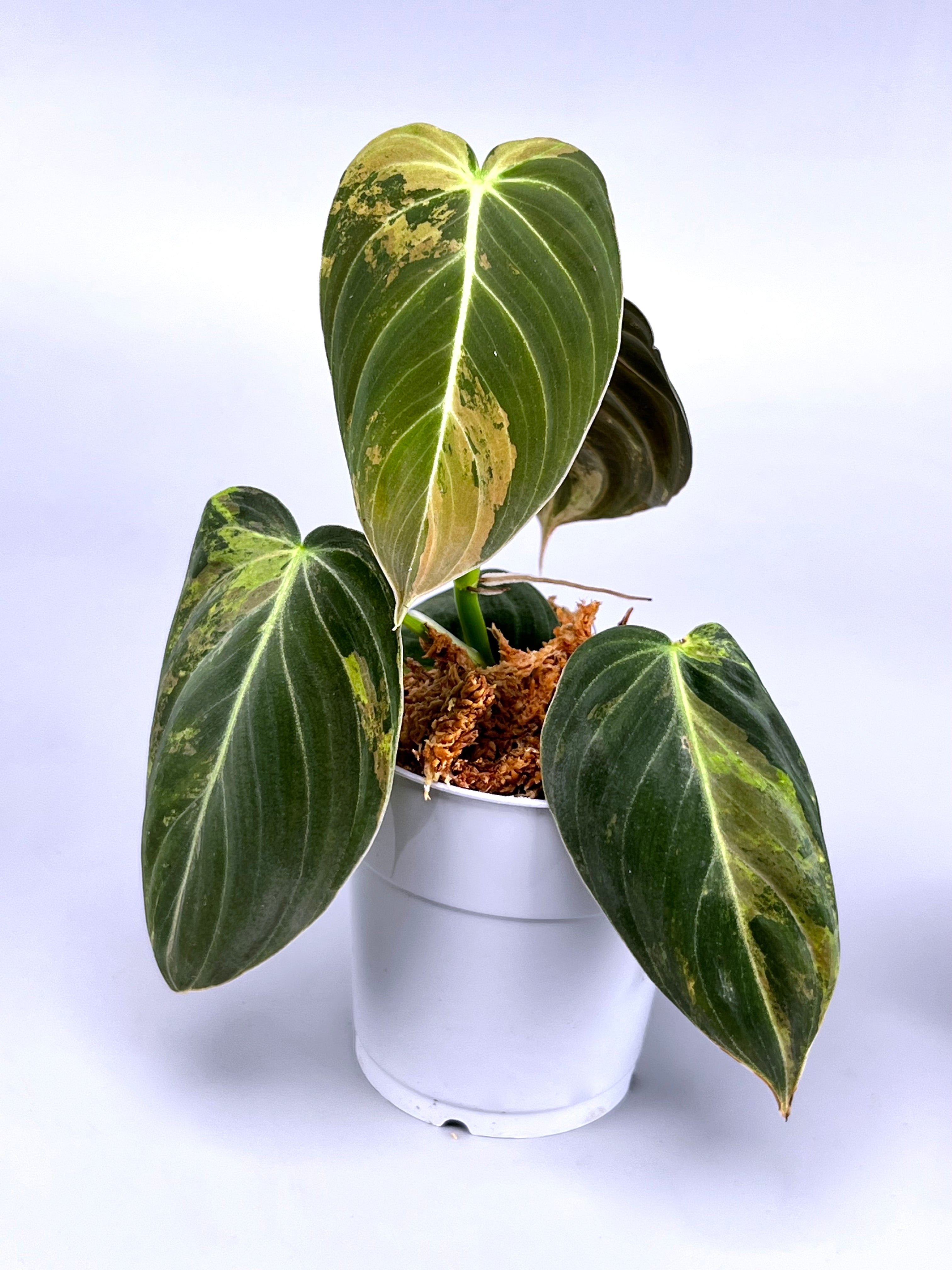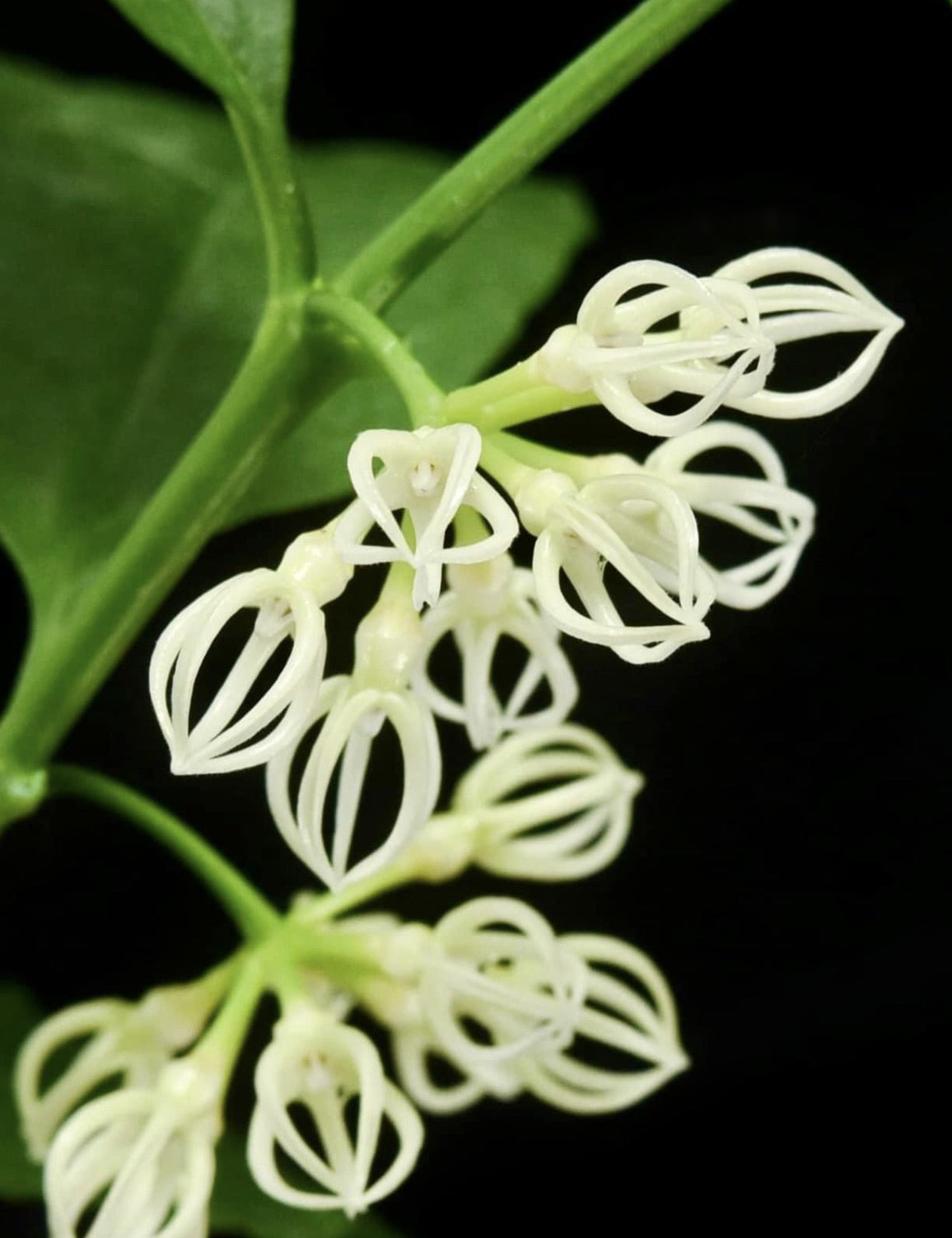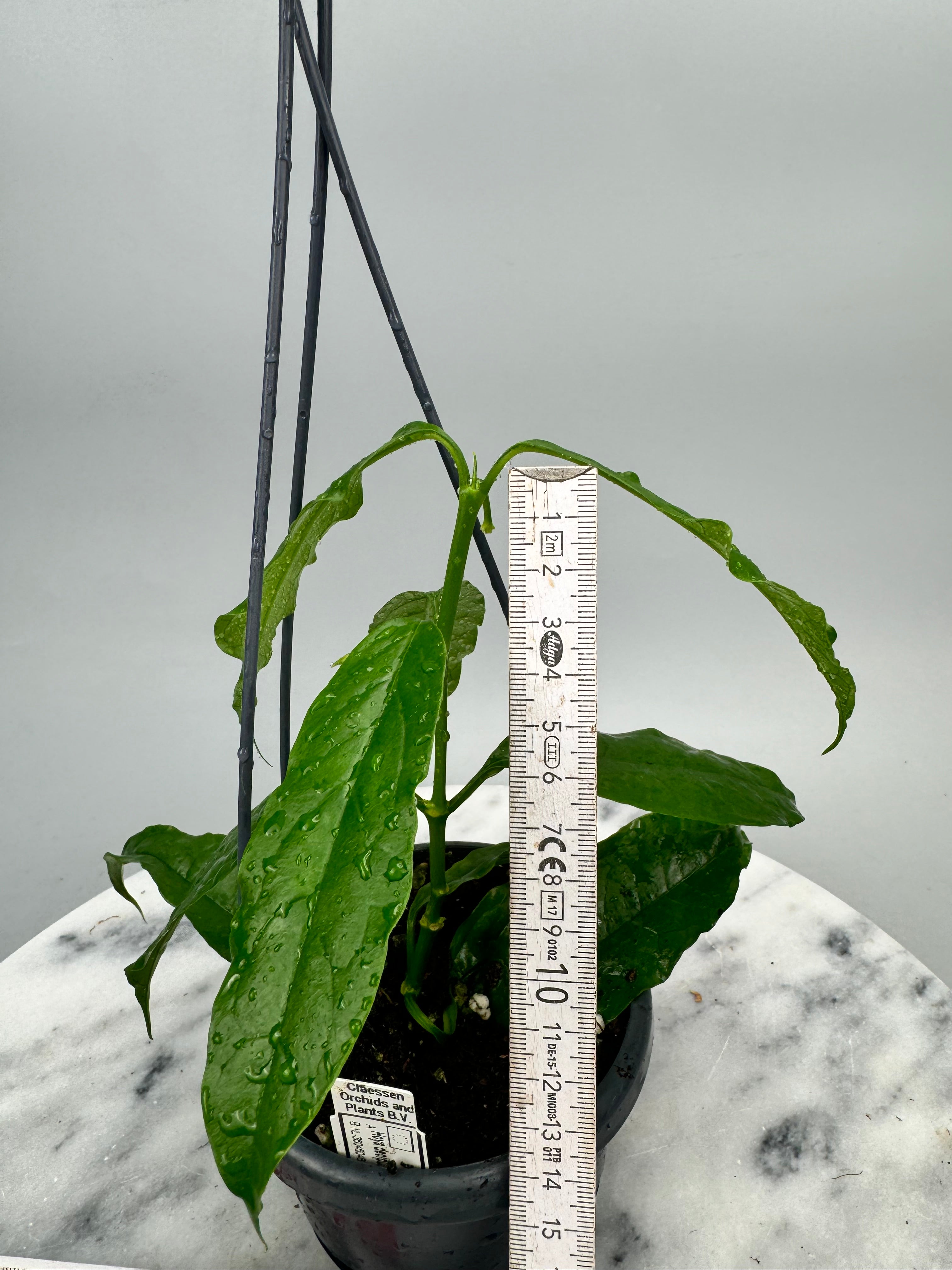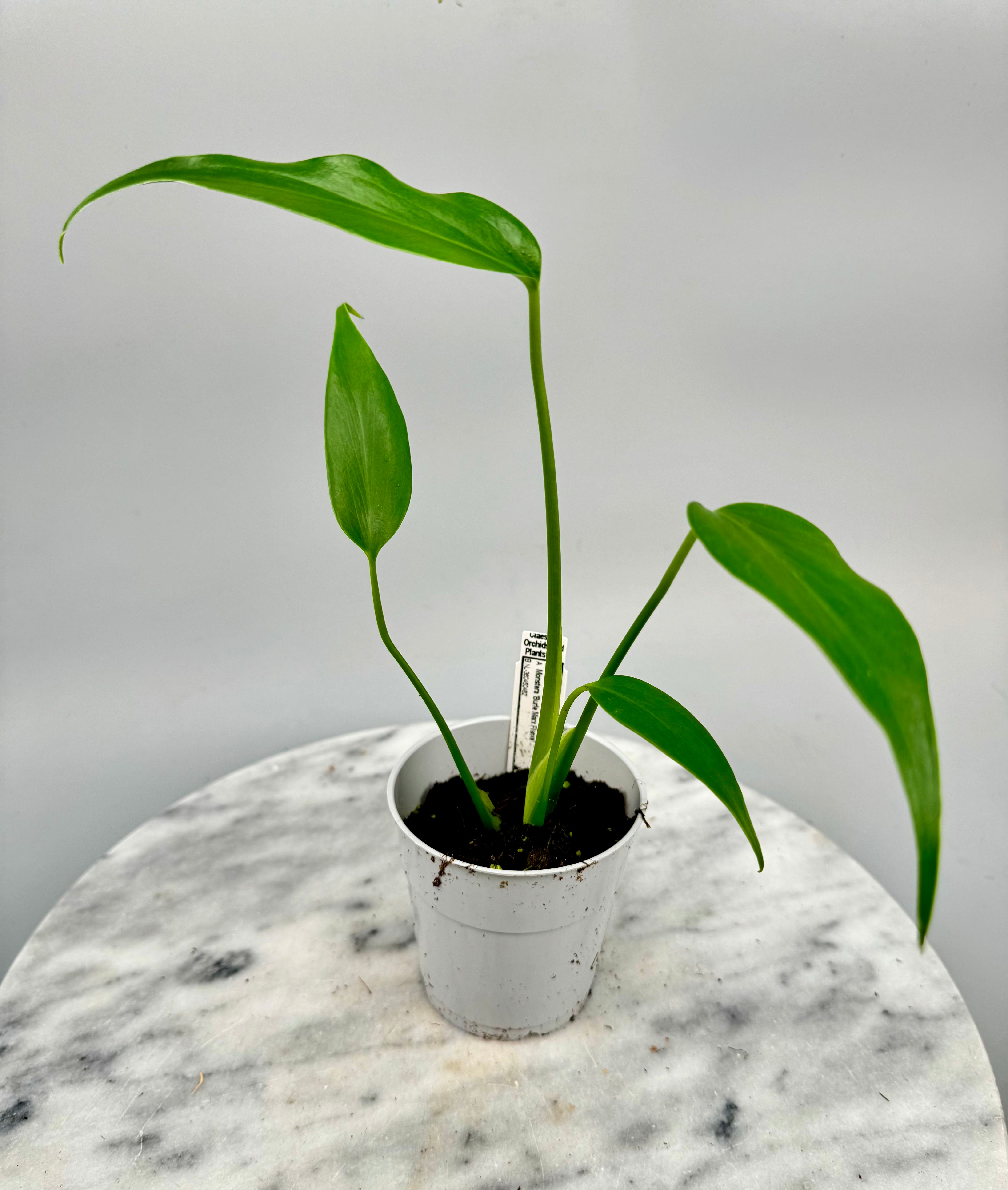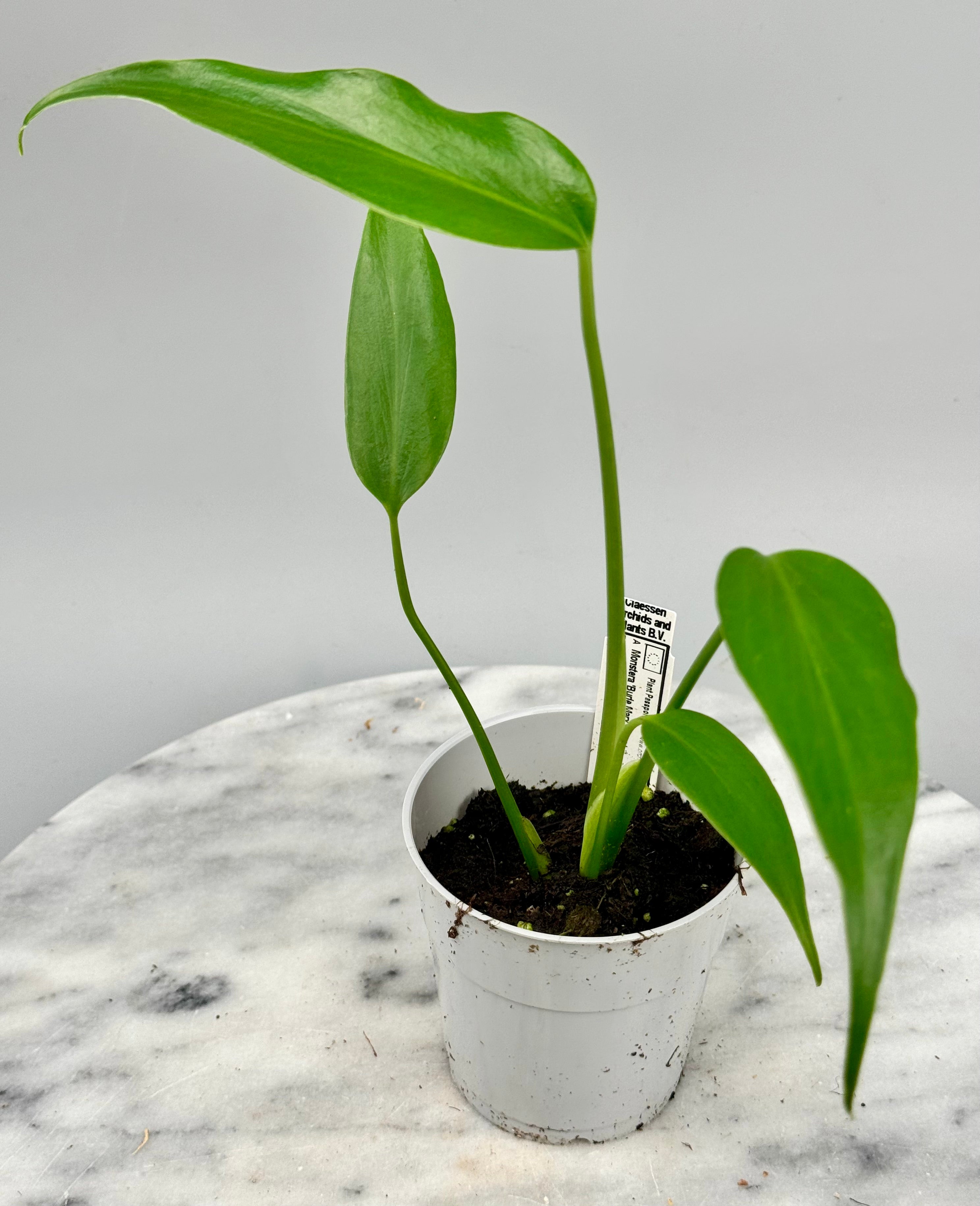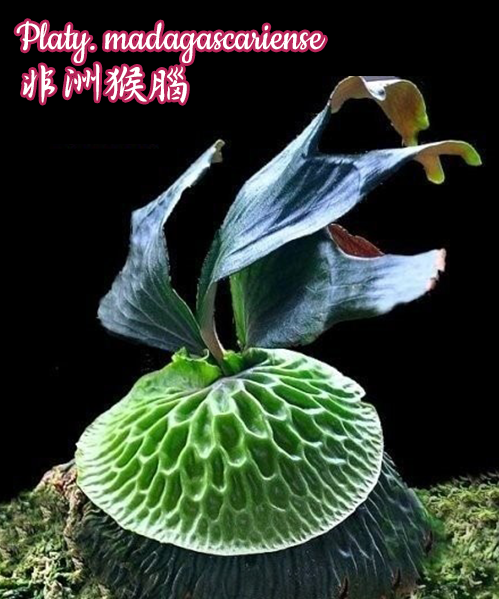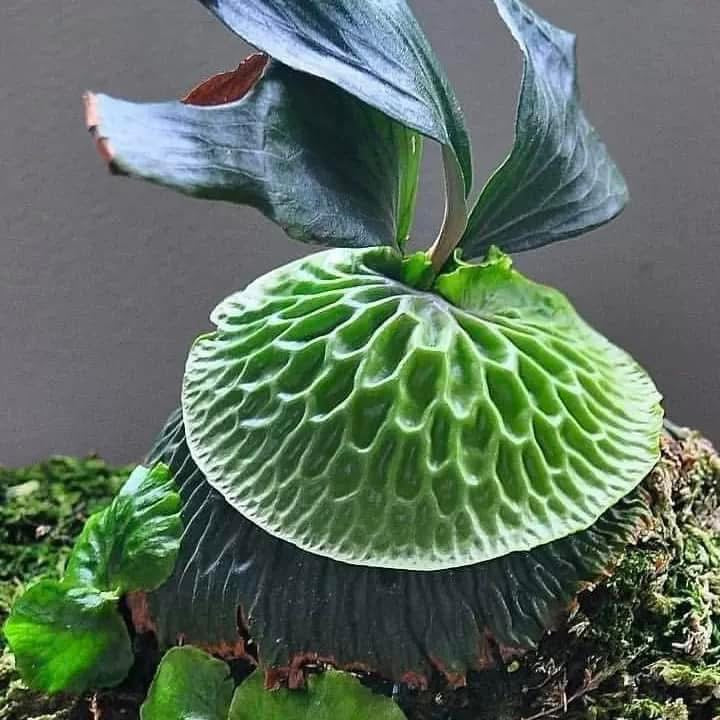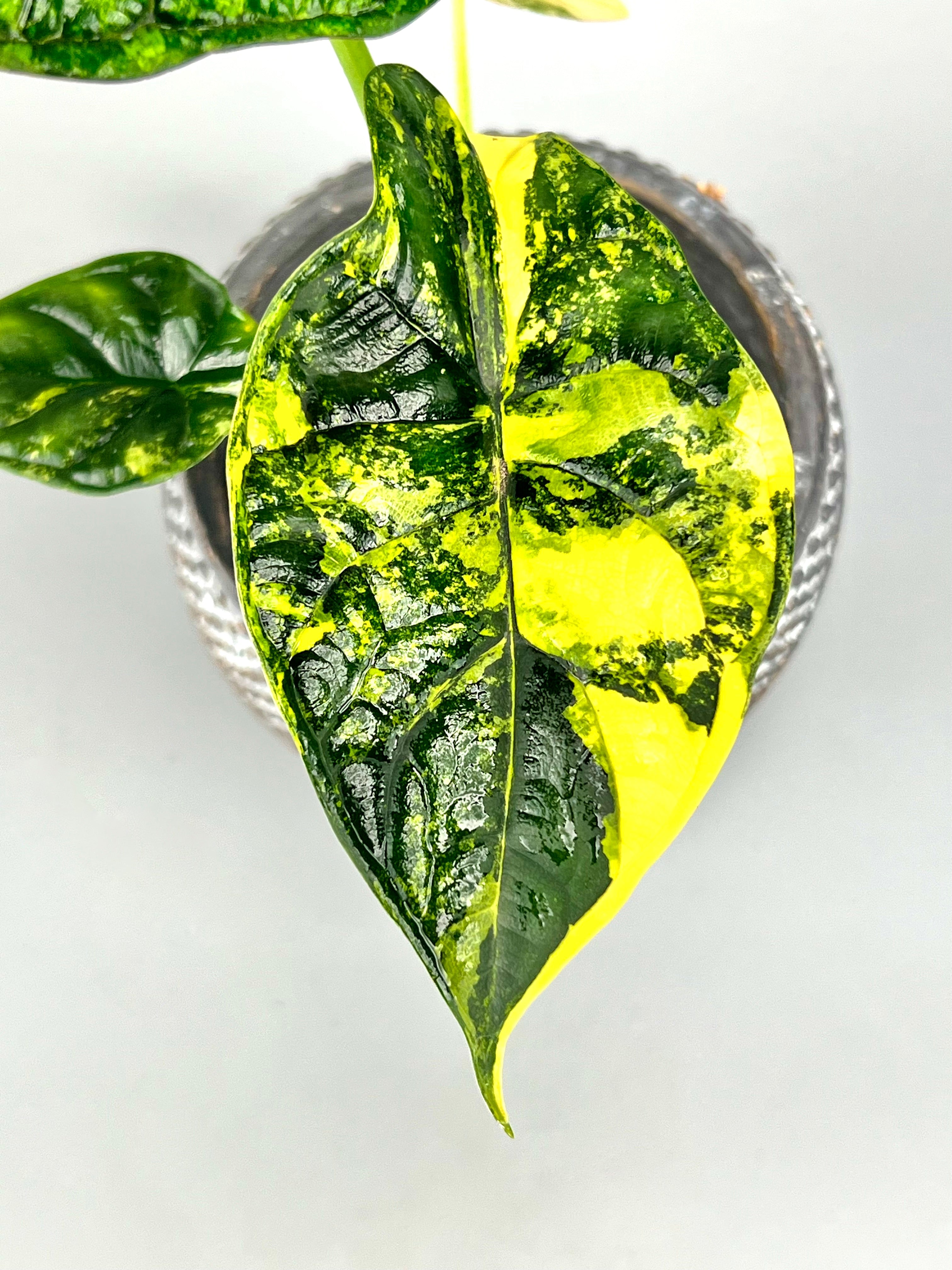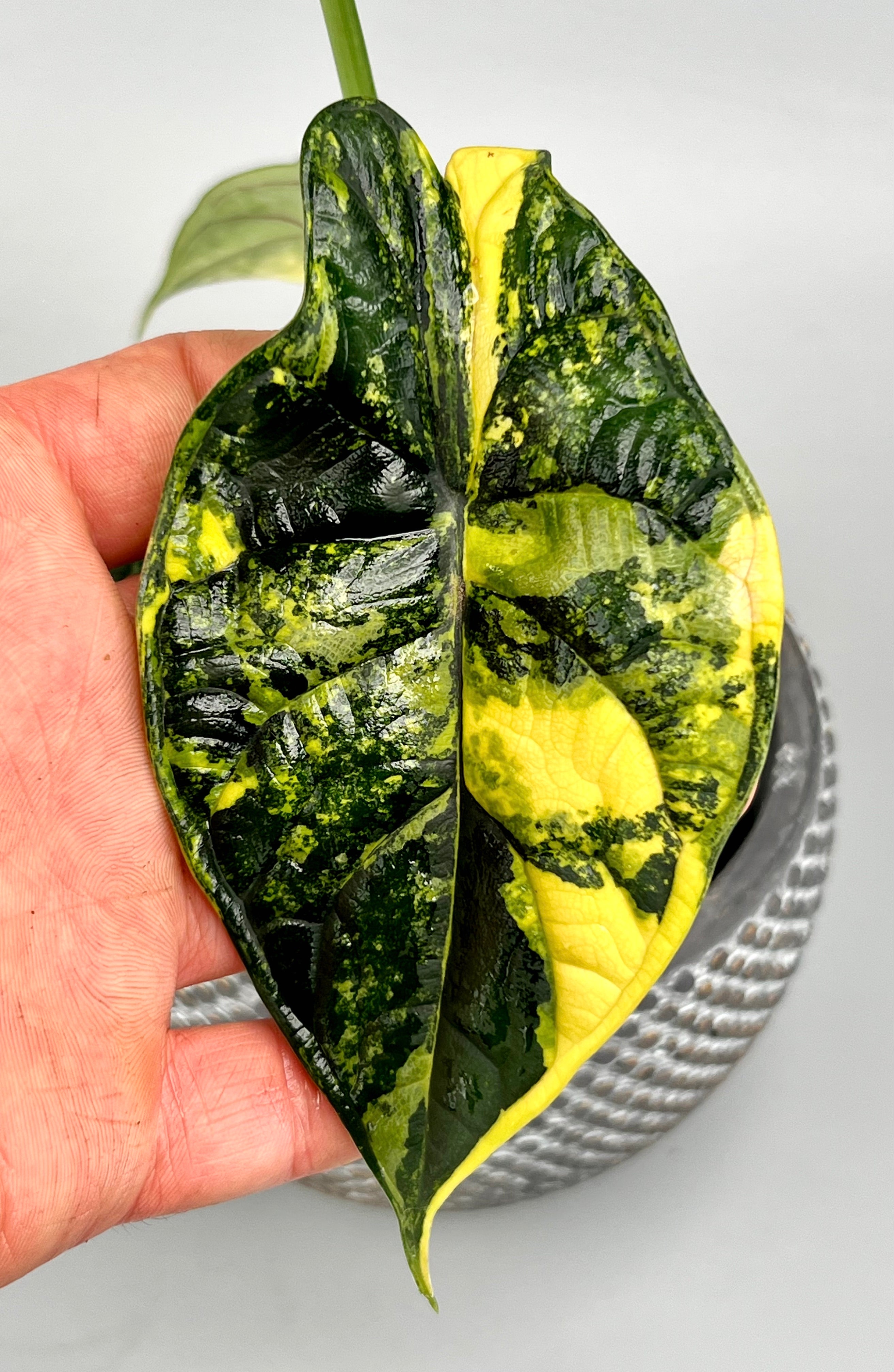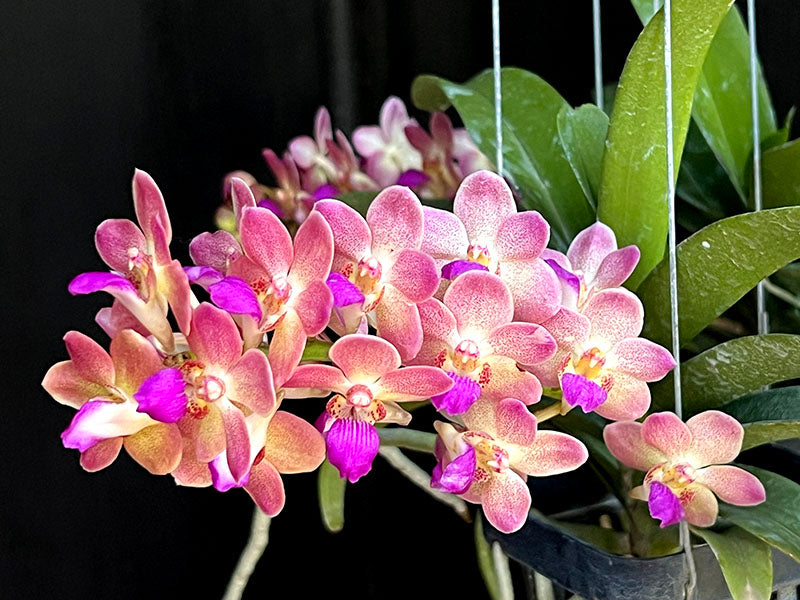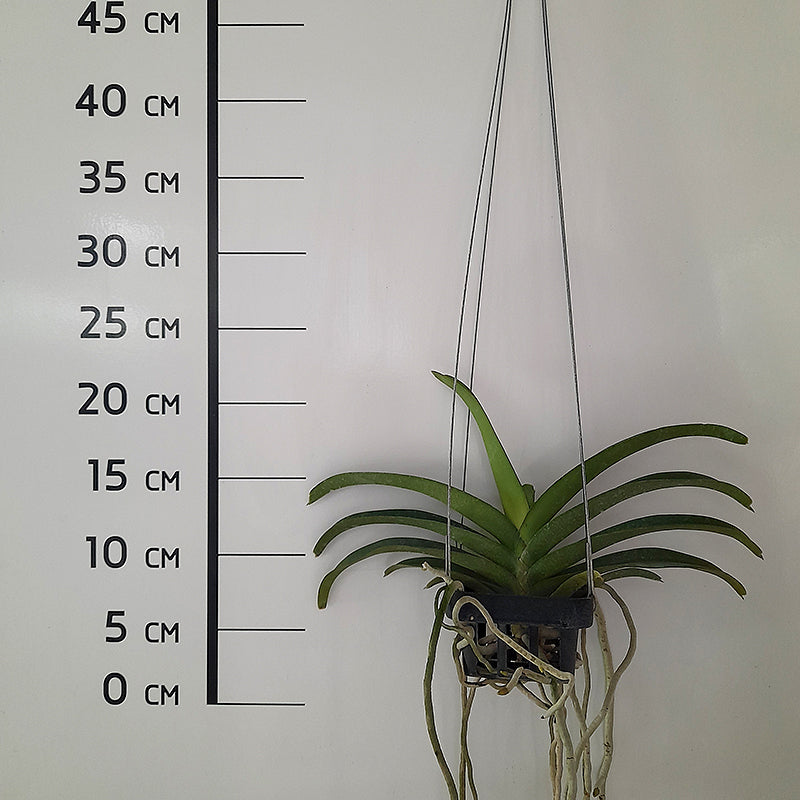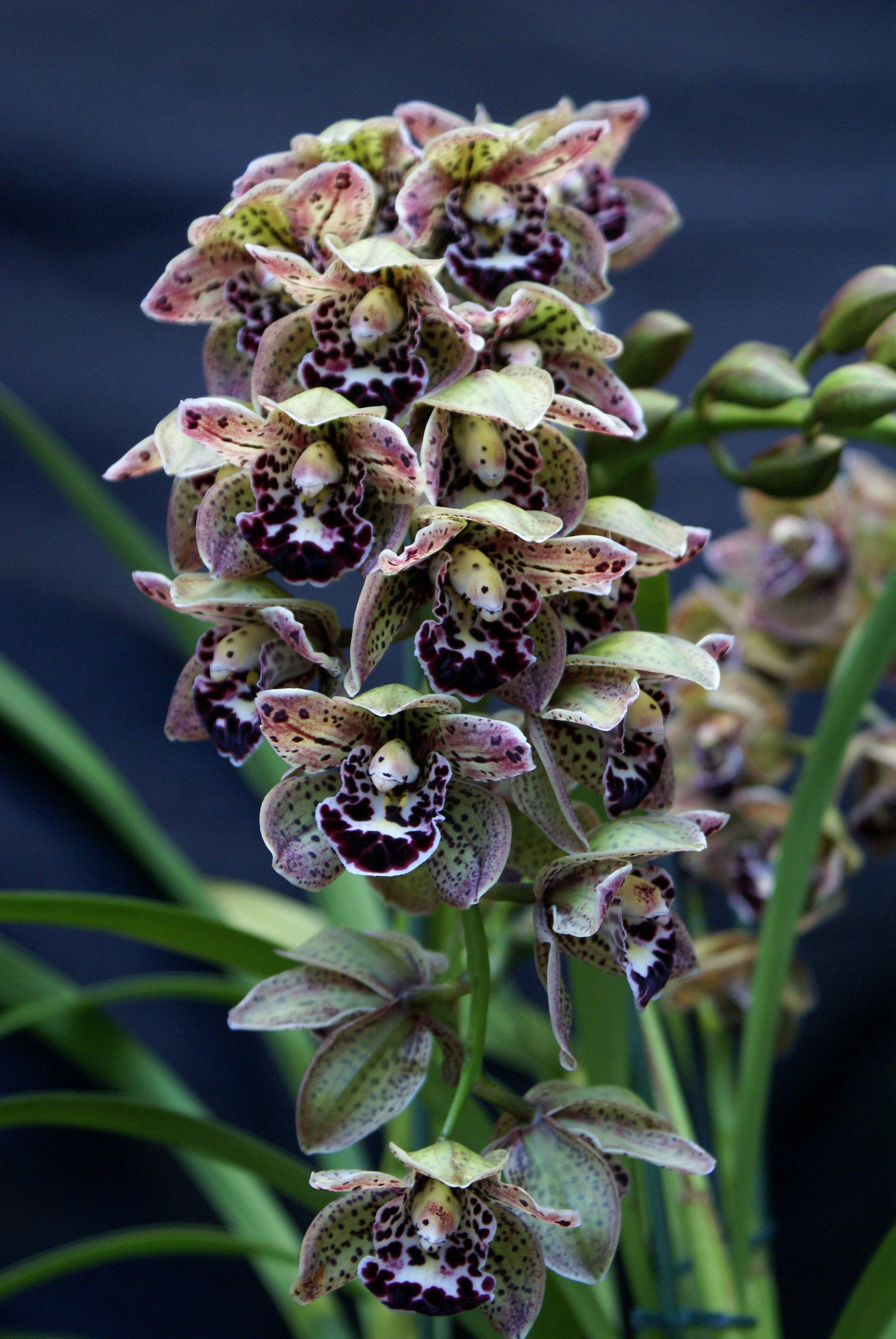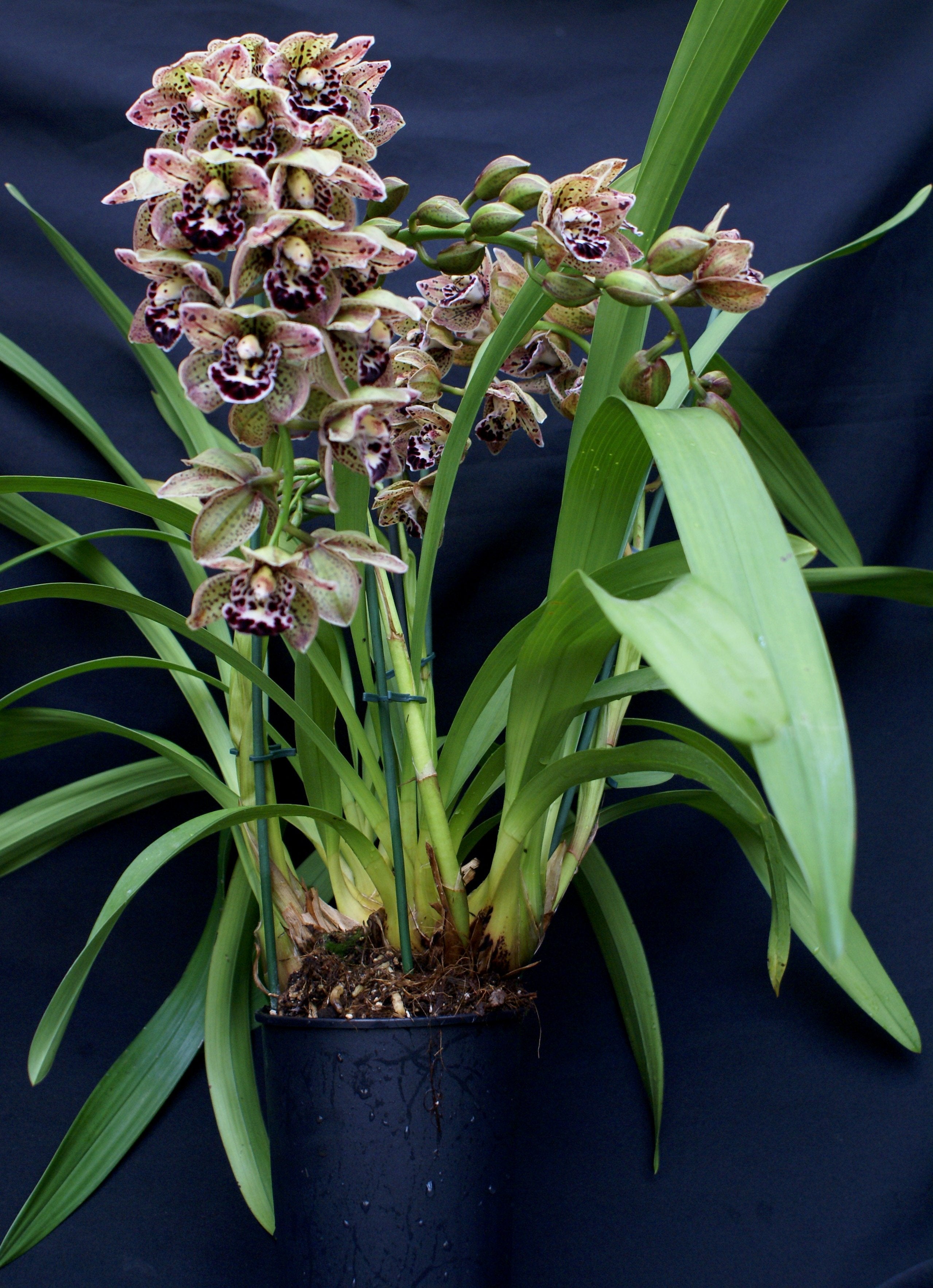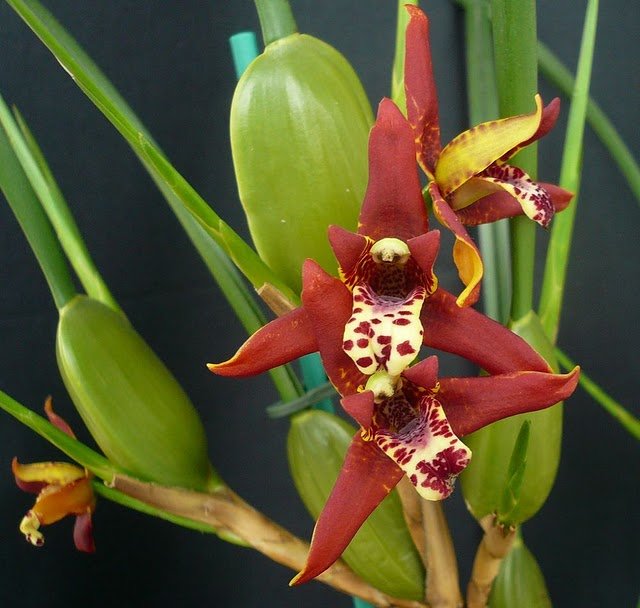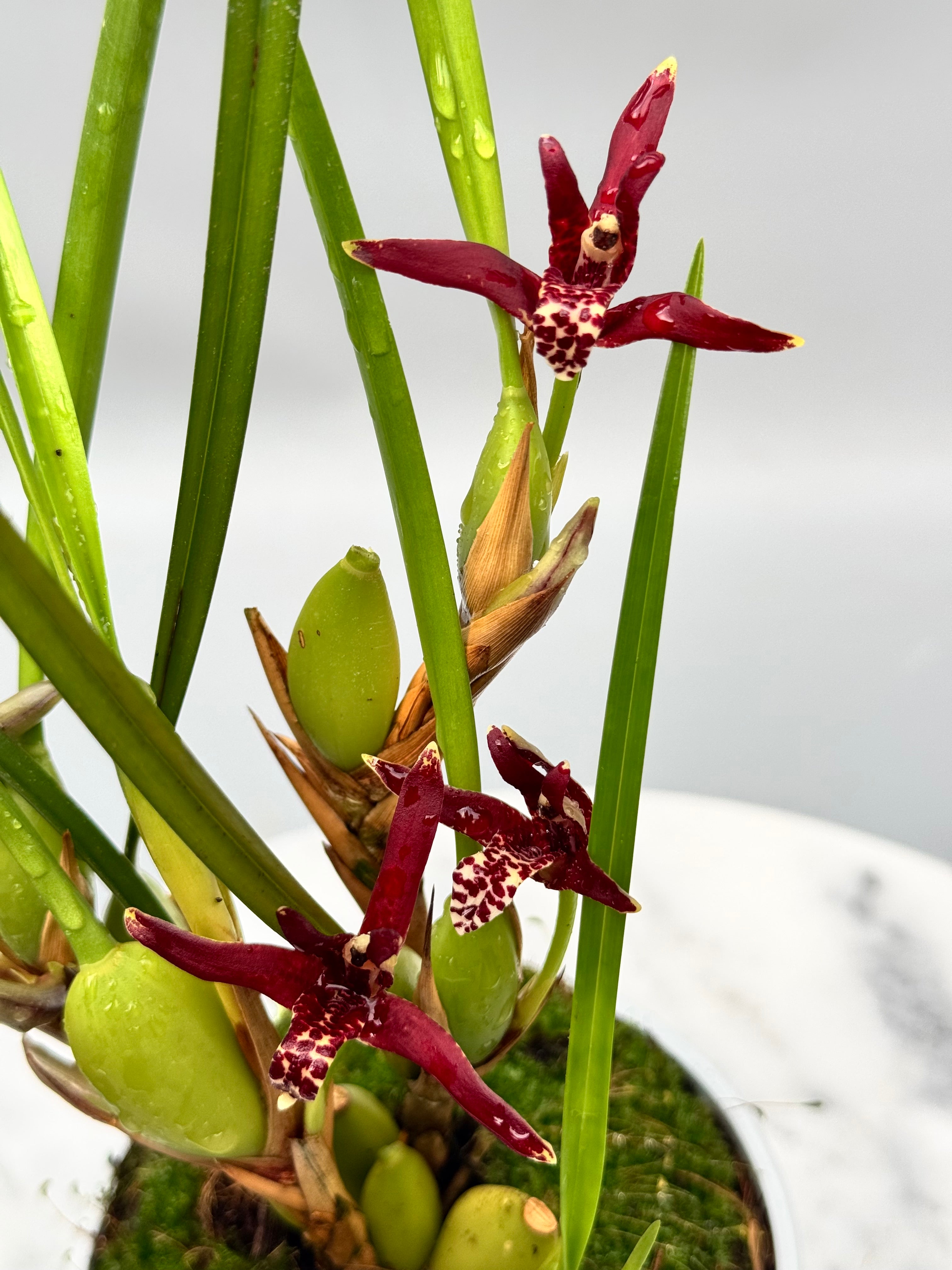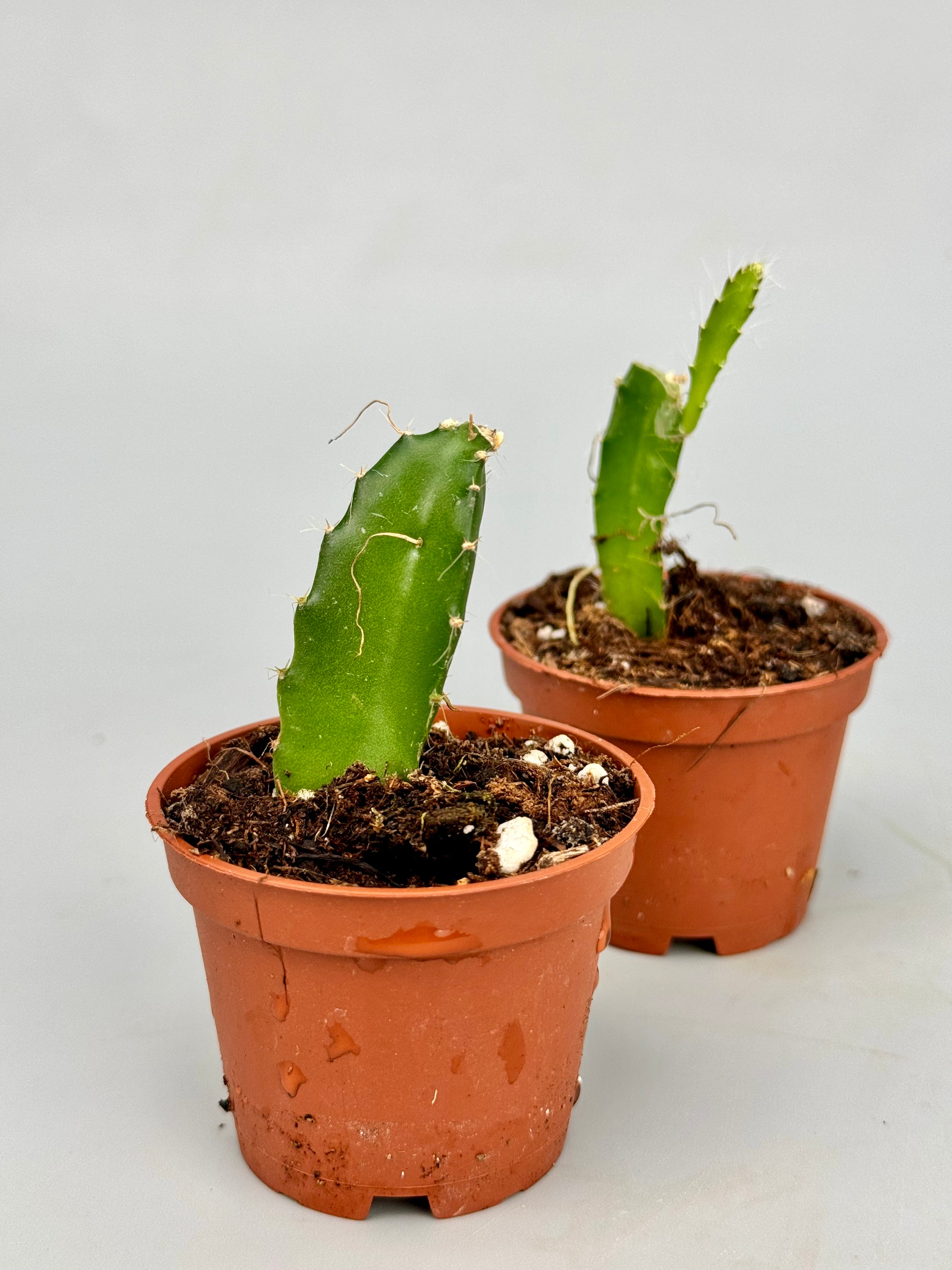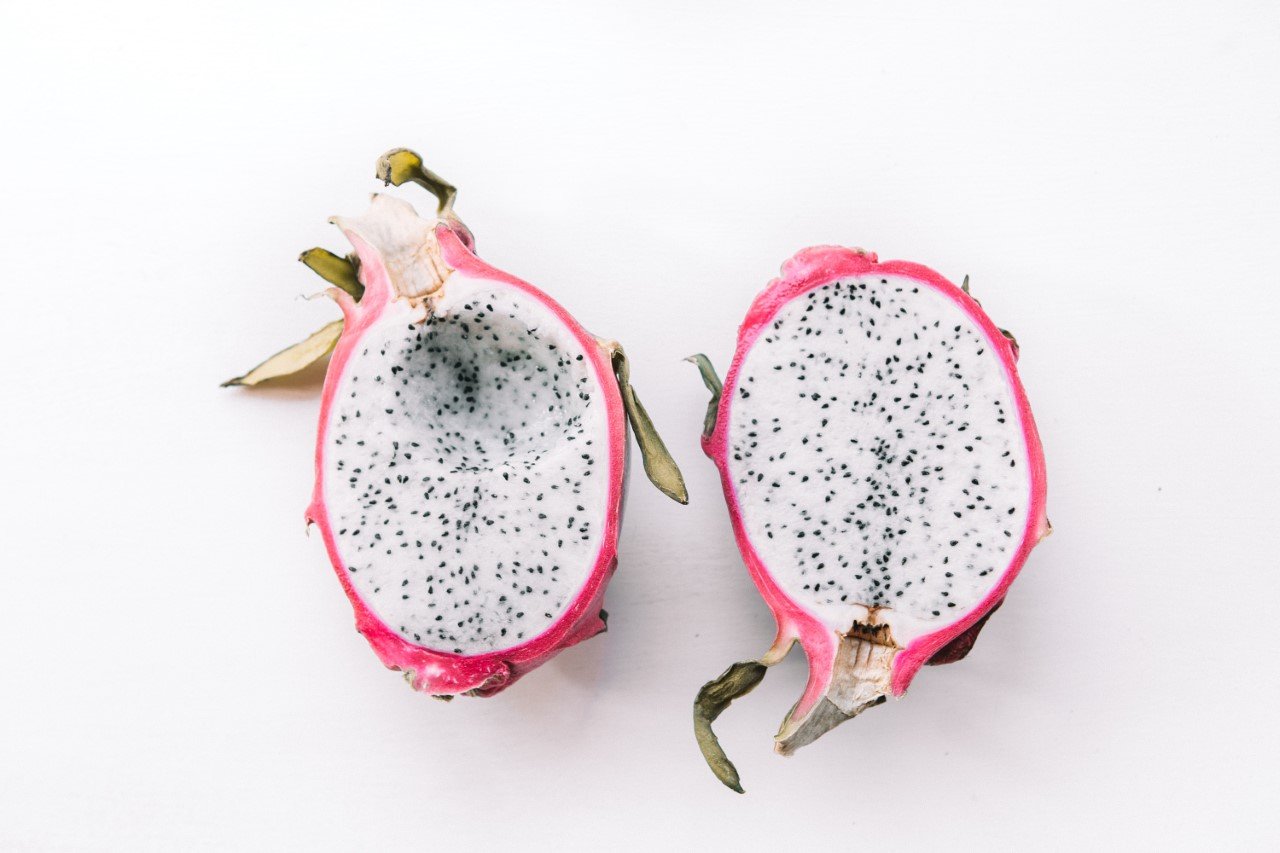What was once a rarity is now a trend that has taken deep root in the world of houseplants: variety. Variegated leaves with their cream, white, yellow or pink patterns have unexpectedly made their way onto the windowsills, greenhouses and Instagram feeds of plant lovers worldwide. But where does this fascination with variety come from? How does it actually emerge? And what does this trend say about how we experience beauty in the plant world?
What exactly is variety?
Variegation is a collective term for deviations in leaf color, where the leaf shows two or more colors. Usually this is a combination of green with white, yellow or pink, but silver, red or even blue-gray also occurs. You see it less often in orchids than in other houseplants, but certain genera such as Ludisia, Anoectochilus and Goodyera are popular for their distinctive veins or marbled leaf structure.
In foliage plants, such as Monstera, Philodendron or Calathea, variety has now become a collecting frenzy. Specimens with unique drawings or sharply contrasting variegated surfaces sometimes fetch hundreds of euros. But behind this beauty lies an intriguing biological story.
How does variety come about?
There are several causes of variety, which fall roughly into three categories:
1. Genetic variety.
This is the type that results from a mutation in the DNA of the plant itself. In a genetically stable variety, the variegated pattern is hereditary: if you take a cutting from such a plant, the offspring will also retain the pattern. These forms are sought after because they are more reliable in cultivation.
2. Chimeric variety
In this, the plant has different cell types side by side, for example, green and non-green cells. This creates patterns that sometimes disappear or expand spontaneously. The problem: if you propagate a plant with chimeric variety via cuttings or tissue culture, it is unpredictable whether the variety is maintained. That makes these plants rare and risky for growers.
3. Virus- or infection-related variety.
Sometimes variegated patterns are caused by viruses or bacteria. In orchids, this is a well-known phenomenon: some so-called 'variegated' cultivars are actually infected, to the detriment of the plant's health. For serious collectors, therefore, this is a red flag.
Why are variegated leaves so attractive?
Part of the explanation for our love of variety lies in rarity: plants that deviate from the norm are often seen as unique and valuable. But there is also something psychological at play: the irregular pattern catches the eye's attention. It breaks from expectation and creates visual tension without becoming chaotic.
Moreover, variegated plants look "made," almost like works of art. The line between nature and design blurs. It is as if you are looking at something that has not only grown, but also been conceived - a feeling perfectly suited to a time when authenticity as well as aesthetics are important.
Orchids and variety: a quiet niche
With orchids, variety is more subtly present than with foliage plants. Nevertheless, there is a growing niche of collectors who focus specifically on leaf orchids with unique patterns. The aforementioned jewel orchids are examples of this, as well as some Phalaenopsis-hybrids exhibit variegated leaves, whether stable or not.
What is striking is that variegated leaf shapes in orchids often go hand in hand with a delicate growth habit. After all, variegation means less chlorophyll, so less energy production. This makes these plants more vulnerable as well as more precious - a combination that collectors find all too attractive.
What does our preference for variety say about ourselves?
At a time when we are overloaded with visual stimuli, variety seems a paradoxical answer: tranquility and unpredictability at the same time. The white areas in the leaves are literally emptiness, but that emptiness gives form to the whole. Perhaps what we seek in these plants is not so much the perfect form, but rather the imperfection that stands out - the chance that creates beauty.
In addition, variety is a subtle form of exclusivity. Because such plants are more difficult to propagate and often have unique patterns, they carry an aura of luxury. They are living collectibles, tangible symbols of taste and refinement.
To wit
The rise of variety is not a loud revolution, but a quiet shift in how we view plants - and perhaps even beauty. Variegated leaves are not just an aesthetic choice, but a reflection of our appreciation for the rare, the unique and the unexpected.
Whether you choose a classic green orchid or a variegated leaf plant, one thing is clear: The future of houseplants is no longer uniformly green. And that may be exactly what we need.

